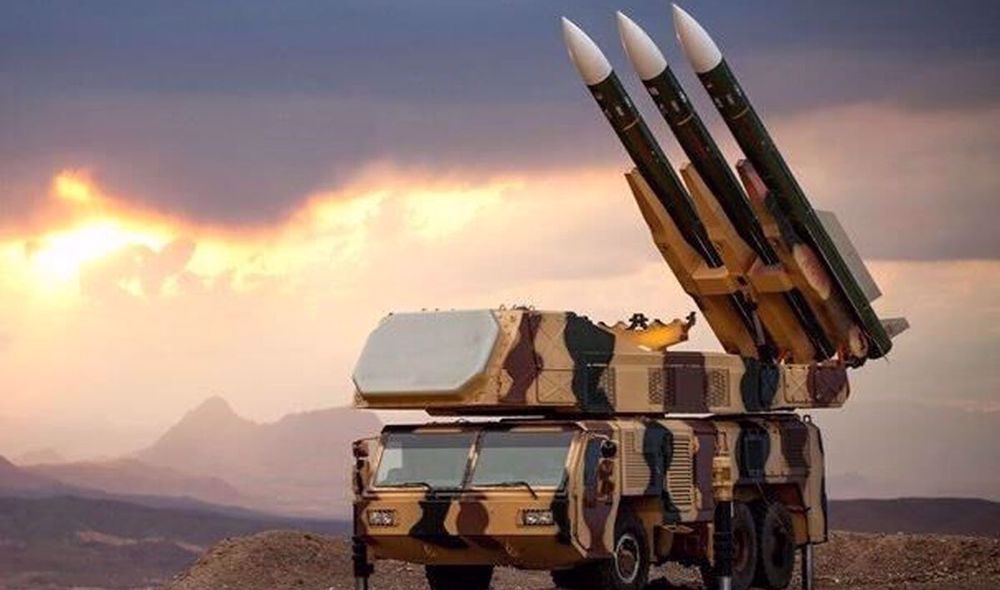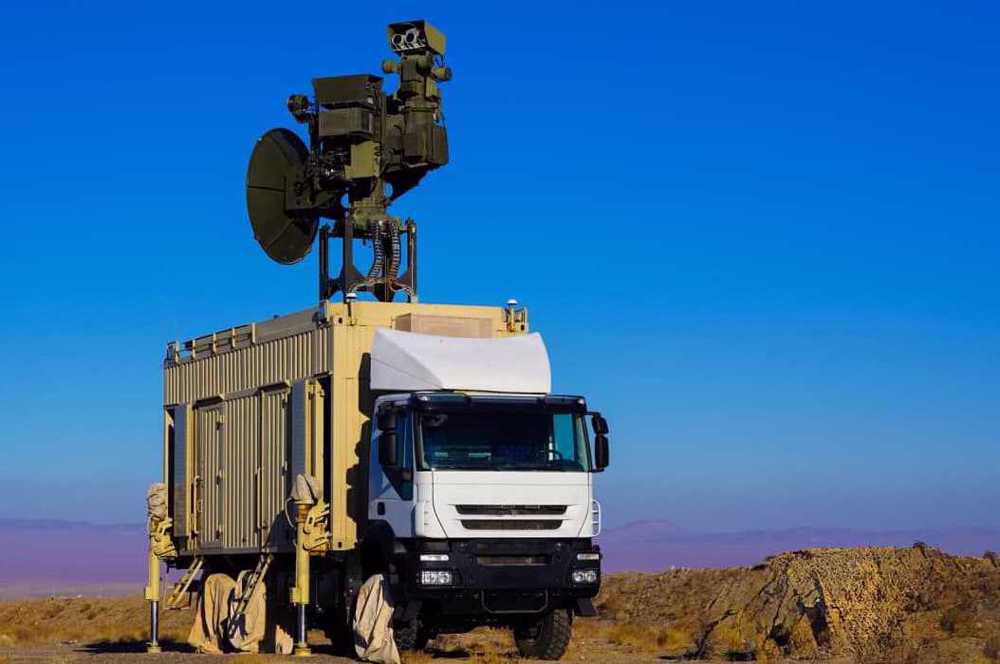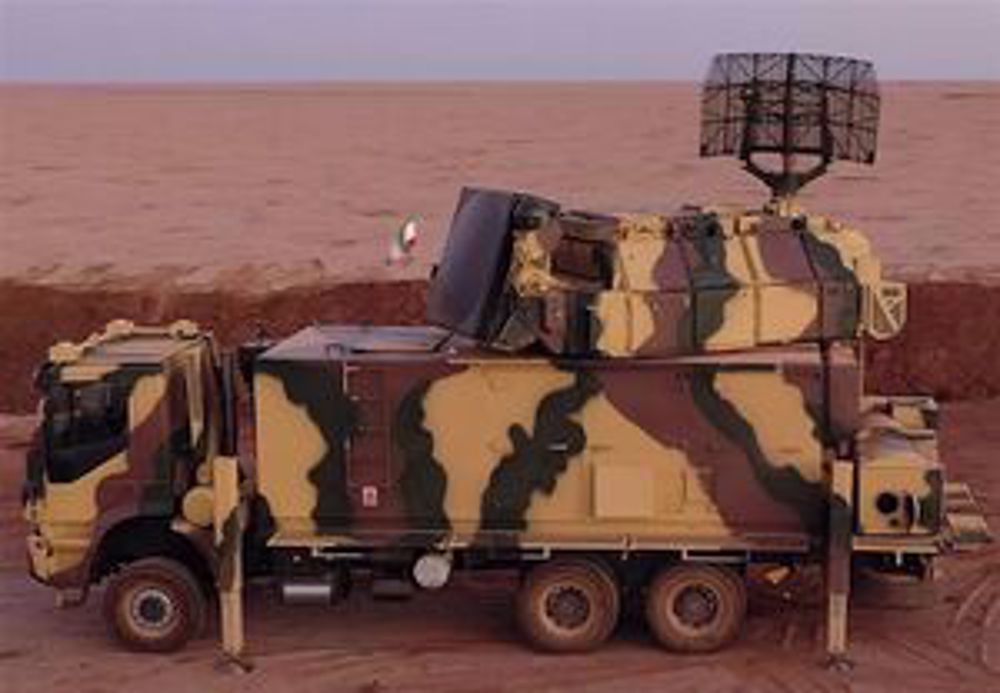By Alireza Akbari
On Tuesday, the Islamic Revolution Guards Corps (IRGC) Aerospace Force launched, for the first time, the 358 defense missile system within the air defense perimeter of the Natanz nuclear facility in the central Iranian province of Isfahan.
Speaking on the occasion, IRGC commander Major General Hossein Salami said various real-world scenarios were designed and implemented during a large-scale military exercise to protect the strategic nuclear facility located in Iran’s central province of Isfahan.
“We tried to perform what we expected the enemies would do in real-world conditions in the form of preplanned scenarios during the [Eqtedar (Authority) 1403] war game,” he stated.
“Fortunately, encouraging results and fairly valuable achievements were obtained.”
It was part of the large-scale military exercise dubbed ‘Great Prophet-19’ (Payambar Aa’zam 19) that was launched on January 4 and is slated to end on Thursday, January 9.
Rapid response operation scenarios have been the key components in this exercise that saw the participation of specialized divisions of the IRGC Ground Forces in the western region of the country.
The 358 defense missile system, a unique loitering surface-to-air missile, is one of the advanced missiles tested for the first time during the ongoing large-scale military exercises.
The first stage of this exercise demonstrated the advanced capabilities of the IRGC Ground Forces in swiftly deploying troops and equipment to operational areas.
IRGC testing new military equipment
A large-scale military exercise, codenamed Great Prophet-19 is underway in Iran’s western province of Kermanshah with aim of strengthening the country’s defense capabilities and combat readiness. pic.twitter.com/9x7hKaPCw0
— Press TV 🔻 (@PressTV) January 8, 2025
Key objectives of this exercise include practicing rapid response, executing offensive operations, quickly deploying forces, and training in challenging geographical conditions.
In this exercise, the IRGC Airborne Forces have also demonstrated their ability to provide aerial support and transport troops to operational areas during the battle.
The exercises resonated with the message that any threat or aggression against the sovereignty of the Islamic Republic of Iran will be met with a strong and decisive response from the armed forces.
According to military experts, these exercises, as one of the country’s most important military achievements, are designed to strengthen defense readiness and test operational capabilities in the face of potential threats, and incorporate modern tactics and strategies.
As a multifaceted exercise involving aerospace, air defense, naval, and ground units, the Great Prophet-19 aims to maintain the readiness of the forces using up-to-date equipment and armaments, while also utilizing the capabilities of the Basij forces in the area of Kermanshah province.
This exercise has both security and defense aspects aimed at enhancing the readiness of operational forces in sensitive border areas amid heightened tensions.
Iran’s IRGC conducted a large-scale and specialized drill in Iran’s western province of Kermanshah.
Various specialized divisions and units of the IRGC Ground Force participated in the drills, codenamed Payambar-e-A’azam (Great Prophet) 19.
Follow: https://t.co/GKZwI4ePgj pic.twitter.com/U39pYlnfwl
— Press TV 🔻 (@PressTV) January 7, 2025
‘Winning punches for critical times’
In an interview with the Press TV website, General Mohammad Hadi Sefidchian, the spokesman for IRGC military exercises, pointed out that many of the IRGC’s technical and tactical operations in the field are not displayed publicly, and they are “reserved as winning punches for critical times.”
The military spokesman also outlined the goals of the Great Prophet-19 exercise.
“Our exercise is conducted in several phases. The first phase is security-focused, the next phase combines security and defense elements, and the final phase may solely involve defensive operations,” he explained to the Press TV website.
He also explained that after assessment, examination and identification of various potential threats, the IRGC designs, plans, and executes these exercises.
He emphasized that the message of this exercise is for the enemies to understand that the IRGC Ground Forces, with their diverse combat and combat support units, are capable of responding swiftly to any enemy in any required geography, assuring that this capability will be demonstrated in practice.
The high-ranking IRGC commander also stressed that they are not seeking war but desire peace.
However, where there is injustice against the Islamic Republic, and if anyone tries to encroach on its land and borders, the enemy will undoubtedly face the harshest retaliation.
He also mentioned that what the enemies see of the IRGC’s capabilities in the field is just the surface.
“For difficult times and advanced tactics that the enemies have not yet dreamt of in any war, we plan and strategize. They should know that the idea of easily infringing upon a country like the Islamic Republic should remain a dream,” General Sefidchian remarked.
Regarding the form and manner of conducting the exercises, he said the exercise is “conducted annually according to our schedule.”
“The IRGC Ground Forces carry out this program annually based on their combat readiness principles and guidelines from the General Staff of the Armed Forces. However, the shape and content of the exercise usually change according to the threats,” the senior IRGC official noted
He also highlighted the security significance of conducting the exercise in the western part of the country, stating that this area has previously witnessed the presence of terrorist groups, which is why the exercise, with its high-security sensitivity, was held there.

Cutting-edge weapons, equipment
One of the standout features of this military exercise is the use of new weapons and equipment. Specifically, the defense system 358, which integrates air defense and drone technology.
The 358 defense missile resembles an air-to-air missile but is launched from the ground. It measures approximately nine feet in length with fins on the body and tail, and a 22-pound explosive warhead capable of reaching altitudes of up to 28,000 feet.
This missile is designed primarily for intercepting and destroying drones and low-flying aircraft.
A significant advantage of this system is its self-sufficiency and autonomous operation, maintaining combat capabilities even under adverse conditions without requiring a large network of defense operators.
The exercise also included the Ra’ad, Sevom Khordad (3rd Khordad), and Dezful defense systems.
Iranian road-mobile medium-range air defense missile system, the 3rd Khordad, was unveiled in 2014. This short-range system is mounted on truck chassis, widely available in both military and commercial fleets in the country.

The system has a detection range of up to 200 kilometers and an engagement range of 105 kilometers. Each battery of this system can launch three Taer or Sayyad-2 missiles.
Each battalion of the 3rd Khordad system consists of four batteries, capable of engaging four targets and launching eight missiles.
In 2019, this system successfully intercepted and destroyed a US Navy MQ-4C Triton drone near the Strait of Hormuz, in the Persian Gulf.
The electro-optical Ra’ad-2 system, linked with the 3rd Khordad, enhances the stability and accuracy of defense systems under electronic warfare conditions.
Dezful is a domestically developed version of the Tor-M1 system, enhanced compared to its Russian counterpart, and utilizes the vehicle chassis.
Developed by the IRGC, this short-range system has a detection and engagement range of 12 kilometers and an altitude capability of up to six kilometers. It also employs an electro-optical thermal system for detecting low-flying aerial targets.

Towards military self-sufficiency
After the Islamic Revolution, Iran underwent a significant transformation in its military doctrine, shifting from reliance on foreign suppliers to achieving self-sufficiency in defense capabilities.
This shift was fueled by crippling sanctions and arms embargoes imposed by Western powers, particularly the United States, which was meant to keep the country in isolation.
The outbreak of the imposed war on Iran by the West-backed Baathist regime of Iraq in 1980 further highlighted the vulnerabilities of dependency on external sources for military hardware.
Under the guidance of the IRGC and the Ministry of Defense, Iran began reverse engineering foreign-made equipment and investing heavily in research and development.
The establishment of the Defense Industries Organization (DIO) became a cornerstone for producing everything from small arms to advanced missile systems.
Beginning with modifications of Soviet-era Scud missiles, Iran has developed advanced systems like the Shahab and Sejjil series, capable of reaching targets across the region.
The program is now one of the most advanced in West Asia, often cited as a pillar of Iran’s deterrence strategy.
Iran has also emerged as a pioneer in unmanned aerial vehicles (UAVs). The domestically produced Shahed series has been widely recognized for its operational capabilities.
These drones have been used for reconnaissance, combat, and electronic warfare.
Iran has indigenized naval vessels, submarines, and air defense systems. The domestically produced Bavar-373 air defense system, often compared to Russia’s S-300, demonstrates Iran’s capability to manufacture sophisticated technology.
In the naval domain, the country has built fast attack crafts, mini-submarines, and even advanced surface-to-surface missiles for maritime operations.
Advancements in defense and military sectors
In an interview with the Press TV website, military expert Asghar Zarei outlined the advancement of the country in the military sphere after the victory of the Islamic Revolution.
“What we witnessed in the early years following the Islamic Revolution and the Sacred Defense was a completely dependent military force, even in the field of specialized training, where many of our officers were forced to go abroad for basic courses,” he remarked.
He also stated that after the Islamic Revolution, especially with the experiences gained during the Sacred Defense years, the country has been able to achieve remarkable progress at an incredibly fast pace in all offensive and defensive sectors.
Watch NBS news on YouTube in Bengali । Subscribe Our YouTube Channel: